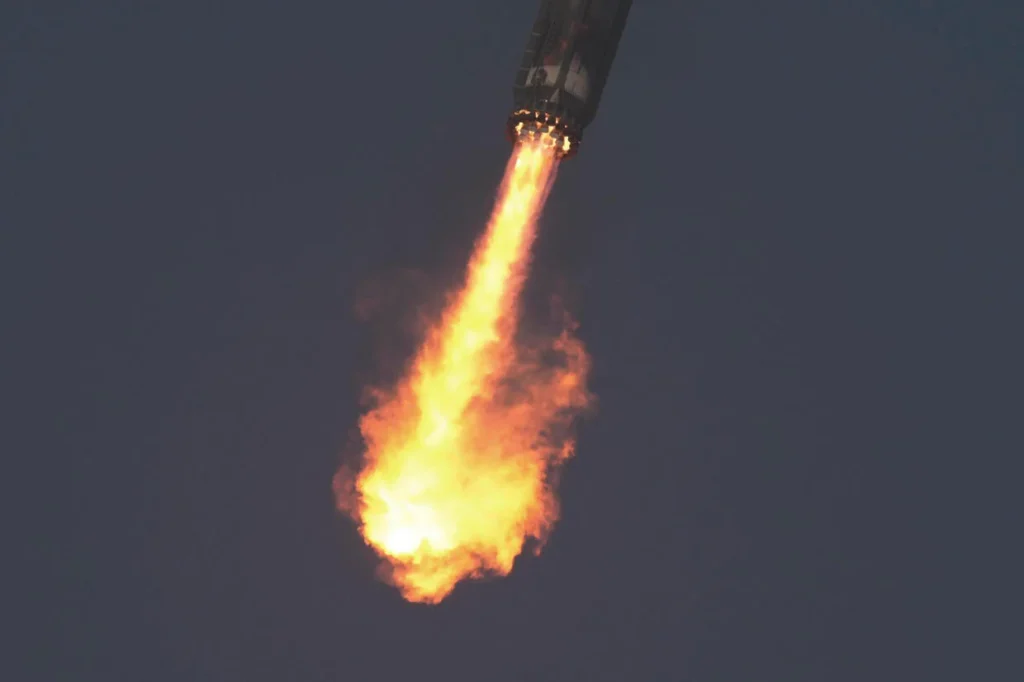SpaceX suffered another setback as its Starship rocket exploded in space during its eighth test flight on Thursday, March 6.
The incident has raised concerns about the safety of future missions, especially as the company aims to land astronauts on the moon and send crews to Mars.
The 403-foot rocket launched from Starbase in Boca Chica, Texas, at approximately 6:30 p.m. Eastern Time.
However, within minutes, contact was lost after the spacecraft went into an uncontrolled spin.

Reports indicate that some of the engines had shut down, causing a loss of altitude control.
The debris from the explosion was scattered across Florida and the Bahamas.
SpaceX acknowledged the failure in a statement, saying,
“During Starship’s ascent burn, the vehicle experienced a rapid unscheduled disassembly and contact was lost.
Our team immediately began coordination with safety officials to implement pre-planned contingency responses.”
The company emphasized that the test would provide valuable insights to improve future flights, stating,

“We will review the data from today’s flight test to better understand root cause.
As always, success comes from what we learn, and today’s flight will offer additional lessons to improve Starship’s reliability.”
Meanwhile, the US Federal Aviation Authority (FAA) responded swiftly by issuing a ground notice for multiple flights in Florida.
Airports in Miami, Fort Lauderdale, Palm Beach, and Orlando were affected, with departures delayed by an average of 45 minutes due to the risk of “space launch debris.”
The FAA has also ordered SpaceX to conduct a mishap investigation to determine the cause of the failure.
This is not the first time Starship has failed in flight.
A previous test in January also ended in an explosion over the Bahamas just eight minutes after takeoff.

These repeated failures highlight the urgent need for improvements before future launches pose a greater risk.
Although SpaceX remains optimistic about learning from each test, there is growing concern about whether safety measures are being prioritized.
While innovation is crucial, ensuring that these spacecraft do not endanger lives must come first.
If issues persist, the consequences could extend beyond financial losses to potential risks for future astronauts.
As SpaceX moves forward, the focus should be on making Starship more reliable before attempting another test flight.












